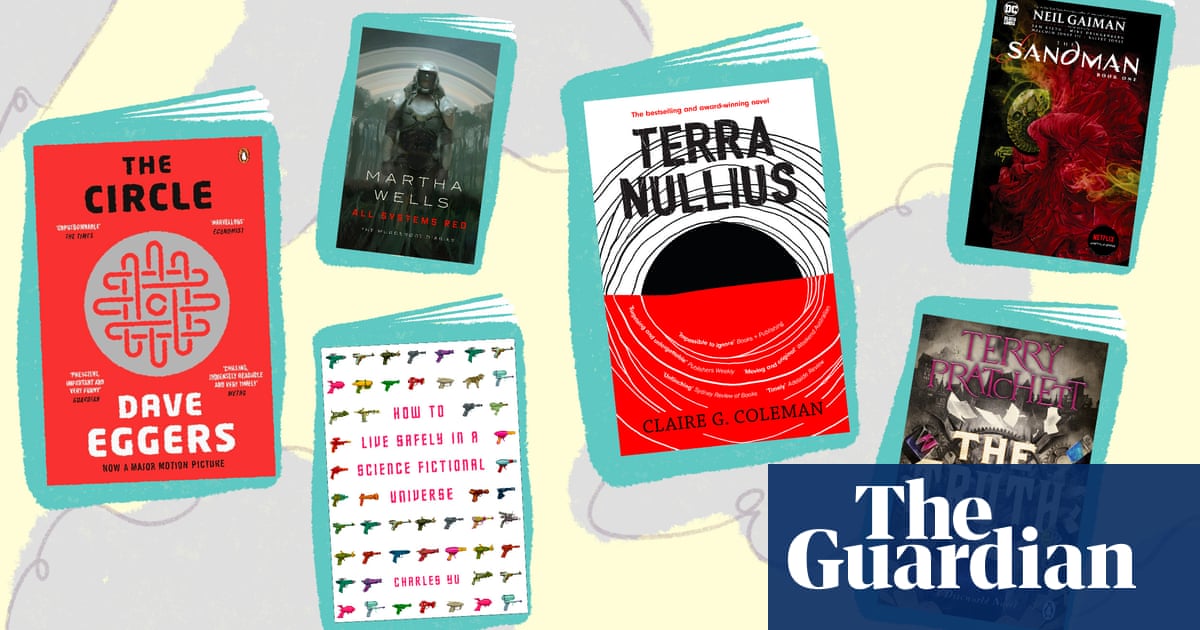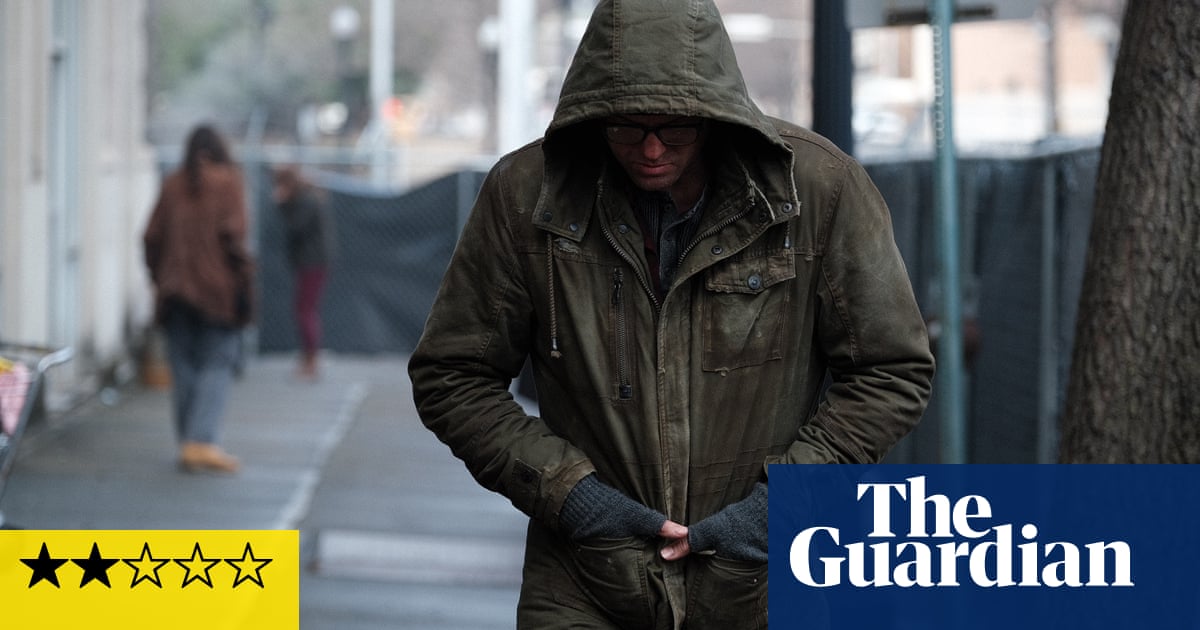
arly evening, 13 July 1972, and something strange and rather wonderful is about to happen. On the previous edition of Top of the Pops, David Bowie had both entranced and outraged the nation by casually draping his arm around Mick Ronson, but this week’s show is set to feature a performance that will prompt just as many excited playground discussions as Bowie’s.
The studio cuts to the gloom of a provincial dance hall, and a shot of a crowd already in the throes of what looks like religious ecstasy. On stage, a striking young woman with a silver face salutes the air and then enacts a secret ceremony, as a dirty whoosh of crunching guitar and pounding drums begins to pour from the TV. A band member frenziedly shakes a flute above his head like a space-age sceptre; another stoops over a table of mysterious electronic devices. The bass-playing singer steps up to the mic and bellows, “I just took a ride in a Silver Machine…”
This is Hawkwind in all their scuzzy, interstellar glory, the underground’s biggest band promoting their new single – less than a year later, and with a million copies of it sold, they’ll be headlining Wembley. It tends to be forgotten just how big this band of west London renegades were in the 1970s, playing to audiences of thousands wherever they went. They’re misremembered now, and were often misrepresented at the time, but as I discovered when writing a book about them, Hawkwind’s story amounts to an alternative narrative for 70s music culture – very different to the one that’s lazily trotted out by scene historians.
Perhaps the biggest misconception about Hawkwind is that they were some kind of leftover from the 60s era of peace and love. Melody Maker’s review of Silver Machine evoked visions of “kaftans and beads,” a band of hippy-dippy idealists who didn’t realise that the age of Aquarius was over. But a quick listen to their legendary 1973 live album Space Ritual should immediately disabuse anybody of that notion, a ferocious torrent of noise and “a black fucking nightmare” (as Lemmy, the man who sang Silver Machine, memorably put it), where Hawkwind channel the paranoid, apocalyptic vibe of the 70s more convincingly than any of their contemporaries.
In fact, while prog rock bands such as Emerson, Lake & Palmer thought they were reinventing popular music by aligning it more closely with the classical canon, Hawkwind were genuinely future-facing and completely unbothered by ideas of tradition or authenticity. Michael Moorcock, the firebrand science-fiction author who often appeared with the band, described them as “barbarians with electronics”, unafraid of technology and what it could do. We wouldn’t bat an eyelid these days at a band that featured avowed “non-musicians”, but Hawkwind’s lack of interest in virtuosity irked the music press, who routinely criticised them for “bashing their riffs around for several minutes on end with no appreciable textural variation” (per the NME).
The press also characterised the band’s audience as dyed in the wool hippies “replete with grubby Afghan jackets”, said Melody Maker – but they couldn’t have been more wrong. While there would certainly be plenty of greatcoats at their gigs, Hawkwind’s core fanbase were young working-class men, unimpressed by the pseudo-classicism of prog and bored by rock elders such as the Stones and the Who. They came to experience something they couldn’t get anywhere else.
In the early days, as Hawkwind spread the counterculture to every corner of the country, this meant access to underground newspapers, free acid (saxophonist Nik Turner had a copious supply of liquid LSD) and onstage nudity (both from dancer Stacia and drummer Terry Ollis) – prompting conflict with the authorities, with manager Doug Smith claiming the band were “subjected to police investigation 68 times in the first few years”. But as Hawkwind’s following grew, so did their shows, becoming multimedia spectacles that combined retina-frying projections with dance and spoken word. In other words, the audiovisual equivalent of a trip, and in tandem with the rhythmic relentlessness of Hawkwind’s music, arguably the UK’s first raves.
Yet amid all this sound and fury, Hawkwind were becoming increasingly sophisticated. They were one of the first bands to develop a cohesive visual identity thanks to the dazzling artwork and conceptual design of Barney Bubbles, the man who would also be responsible for creating some of punk’s most striking images. But it was with the arrival of frontman and poet Robert Calvert that Hawkwind transformed from space rockers into a fully fledged science-fiction band. Along with David Bowie, Calvert was one of the few artists of the time who understood how SF could be used to dramatise and critique the modern world. A brilliant lyricist, distinctive vocalist and master of “spontaneous theatre”, it’s not a stretch to talk about Calvert and Bowie in the same breath.
But crucially, Hawkwind remained an underground band committed to doing things on their own terms, a rallying point for anti-establishment feeling and mainstream resistance. While the press often failed to understand their appeal, Melody Maker presciently noted: “There’s a Hawkwind cult now that’s almost as vital to their gigs as the music … Hordes of dedicated teenagers regard them as the revolution personified, and some of them must be ticking off the days to the takeover with increasing impatience.”
With their mood of anarchic possibility, Hawkwind gigs were a breeding ground for young punks everywhere, those “dedicated teenagers” coming of age and striking out on their own. John Lydon was a regular presence at their gigs in the early 70s, and was taken under Calvert’s wing at the height of Sex Pistols mania, with the self-proclaimed antichrist attending the singer’s wedding reception. Coming out of the same Ladbroke Grove milieu, Joe Strummer and Mick Jones of the Clash had grown up in Hawkwind’s world, while Brian James and Captain Sensible of the Damned were also fans.
It wasn’t just the noise of Hawkwind that excited and inspired this new generation – though Dave Brock’s distinctive choppy guitar style certainly influenced them – but their attitude as well. Hawkwind showed that you didn’t have to play by the rules of the music industry; you really could do it yourself. As Joy Division and New Order’s Stephen Morris has said: “Punk rock started because in every small town there was somebody who liked Hawkwind.” Rather than just a footnote in the history of punk, Hawkwind are an integral part of its creation story.
In many ways, Hawkwind have been victims of their own longevity. In March 1978, at the end of an underwhelming American tour, they split up, their mission seemingly at an end. As it was, they quickly reconfigured themselves as the new wave-anticipating Hawklords, before reverting back to their original name a year later. But what if they’d stayed split up? Would they have been reappraised by the media cognoscenti and talked of in the same reverent tones as the likes of Can? Or more likely, would they have remained marginalised and maligned, the eternal square peg in the round hole of British music culture?
Despite their muted legacy, I would argue that Hawkwind were one of the most revolutionary bands to come out of Britain in the 1970s – perhaps the most. Avatars of the underground, figureheads of the free festival, and heralds of punk, they remain a true maverick force and an inspiration for contrarians everywhere.
• Hawkwind: Days of the Underground – Radical Escapism in the Age of Paranoia, by Joe Banks, is published by Strange Attractor Press. Carnivorous, the new album by Hawkwind Light Orchestra, is released by Cherry Red.












